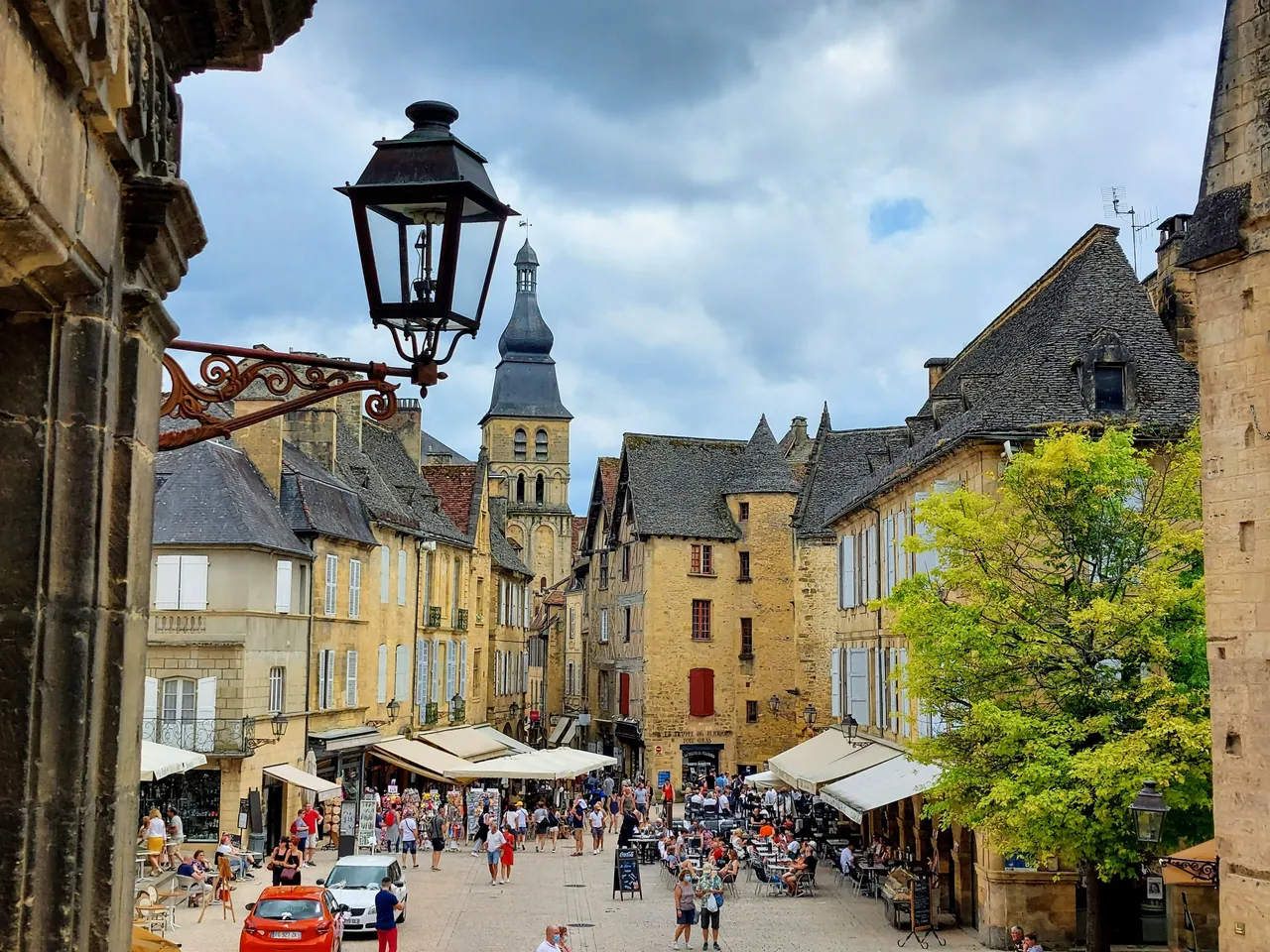
Sarlat-la-Caneda is located in the Southcentral part of France near the Dordogne River, in a section known as the Périgord Noir. Noir or Black refers to truffles, which are what the area is known for and which are famous around the world.
Sarlat was our first main destination of our trip to the Dordogne and we made it our home base for two nights during our stay in the region.
Brief History
Sarlat-la-Caneda is a medeival city that dates back to the middle ages, to around year 1081.
Interestingly, it was one of the few cities in the country that wasn't raided by vikings when they were ravaging the country, and though it took some damage during the Hundred Years War, it was mostly ignored throughout our more modern history.
As such, the town wasn't damaged during the world wars of the 1900's which left it in nearly pristine condition.
It is now considered to be the best representation of 14th France in all of the country.
The old town center actually has 77 protected momuments, which is apparently the highest density of historical buildings in any city of France.
When we arrived in town my wife and I spent some time just walking through the winding streets.
The yellow sandstone buildings almost seemed to glow in the early afternoon sunshine.
One of the most photographed buildings in Sarlat is called La Lanterne des Morts (or the Lantern of the Dead).
It's a conical, bullet shaped building that stands 6.5 meters tall and was built in the year 1170 in honor of the passing of St. Bernard.
Another interesting sight to see is located just outside one of the oldest buildings in the city, the Gisson Mansion.
Its a bronze statue created by the sculpter Gerard Auliac and its called The Spectator.
There are also quite a few modern art statues scattered throughout the old town by an unknown artist. They're of people in various poses doing various things - some of which are humorously risqué. What happened to her shirt!?!
Among the other historic buildings that you will find in town is Le Presidial. you can recognize it from the large lantern house located on it's rooftop. It was built in 1552 as the center of justice and it also housed the city's prison in its basement. It has since been converted into a fancy restaurant and I can say that the food there is really quite good. I highly recommend it.
Market day in Sarlat is each week on Saturday and Wednesday and its absolutely massive - by far the largest market that we have experienced in all the France. It is located in the main square, Place de la Liberté and expands outward from there, encompassing several long street beyond.
If you go at the right time of year you're sure to find fresh truffles in any of the stands - black truffles in winter and summer truffles in late spring and early summer. I actually purchased a truffle myself. Black truffles are actually extremely expensive, costing upwards of 1500 euros per kilo. Summer truffles are a little more reasonable though.
I bought a summer truffle about the size of a golf ball and it cost about 16 euros - expensive but not totally unreasonable. I did it for the experience of it because I had never tried truffles before. You can also by small black truffles year round from any shop in town but they are stupidly expensive, approximately 30€ for two marble size ones in a jar. They aren't fresh and I don't know how they are preserved - maybe pickled?. I've never tried them so I don't know if they are good or even worth the money. They could just be more of a tourist gimmick?
Gastronomy
Sarlat is considered a center for gastronomy and is known for two things in particular truffles (which I mentioned previously) and fois gras.
These items can be found in the markets and nearly every shop throughout the city as well as on the menu of pretty much every restaurant and there are a lot of restaurants in town.
The town takes a lot of pride in these items as well and even hosts two festivals each year to celebrate them. In January the town celebrates the Fete de la Truffe (truffle festival) and in February the Sarlat Fest'oie, (Goose festival).
A short distance away from Place de la Liberté is a small square historically known as Place du Marché des Oise (or Goose Market). There you will find a quarky little statue that honors the geese that produce the fois gras.
Sarlat has a few local specialties dishes as well. One of them is called tourin à l'ail, and was my wife's favorite.
It's a French egg drop soup thats white and made with duck eggs and a ton of garlic. It was quite delicious.
My Takeaway
Sarlat wasn't the most photographic town that we have visited but it definitely had a feel to it that stood out as something special.
It was unlike any other place we have been and gave me a positive feeling that I don't think I will be able to explain.
The old town is large and well preserved and it definitely made me feel as though I was stepping into a different time.
The high density of restaurants, the extensive market and all of the shops selling local delicacies also really gave me the sense that food is somethings that is very important, or perhaps even sacred to them.
Overall I think that Sarlat was a really good start to our trip and was one of those places that won't soon be forgotten.
